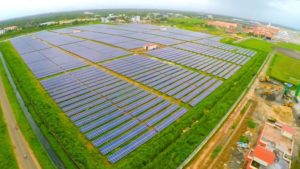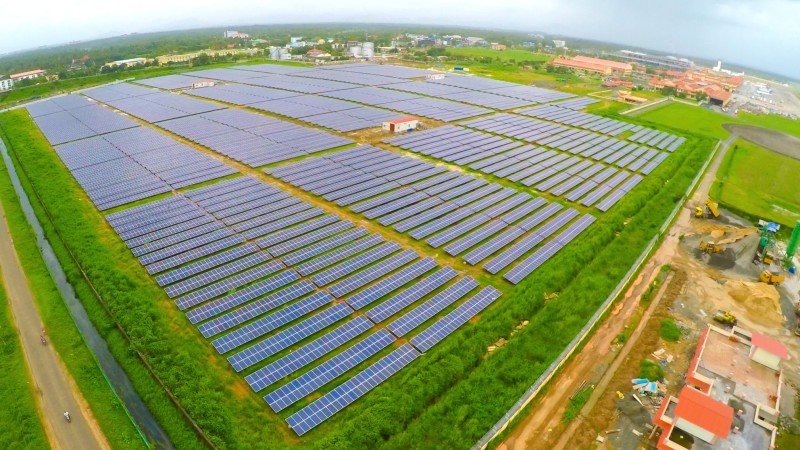Because of the rise in energy prices, Cochin airport (in the state of Kerala, India) decided to produce its own electricity!
It is estimated that the number of regular airline customers has more than doubled since 2004. All over the world, huge airports have been built. With the ensuing consequences on the climate, because they are large consumers of electricity: today, civil aviation and its infrastructure (airports) could be responsible for 5% of global warming.
Officials at Cochin Airport in Kerala, India, have tackled the problem through their energy bill. Since 2015, the Regional Airport (which is the 4th Indian airport in terms of traffic and attendance) has been fully powered by electricity generated by solar energy. “We started with a 100kW pilot project“, said V. J. Kurian, managing director of the airport. “We immediately found that this allowed to produce 400kW. We then decided to see things bigger and invest in devices to capture solar energy. Today, the airport has a daily output of 29.5 megawatts.”

Part of the solar panels that power the airport. Other panels were installed on the roof of the car parks. © Boschbuildingsolutions.
An initiative rewarded by the United Nations
Since then, all devices at the airport have been powered by green energy, from luggage turnstiles to computer equipment. The airport also houses a farm, built under solar panels. It produces around 60 tonnes of organic vegetables each year, which are sold in local shops or even to airport employees themselves.
In a country that is considered the third largest CO2-emitting country in the world, this initiative has become a model. It is of interest to other regions, but also to universities and environmental organisations around the world.
In 2018, Cochin Airport received the UN Champions of the Earth Award in the Entrepreneurial Vision category.
Tags: airport, Cochin, India, solar energy, United Nations Earth Champions Award







































